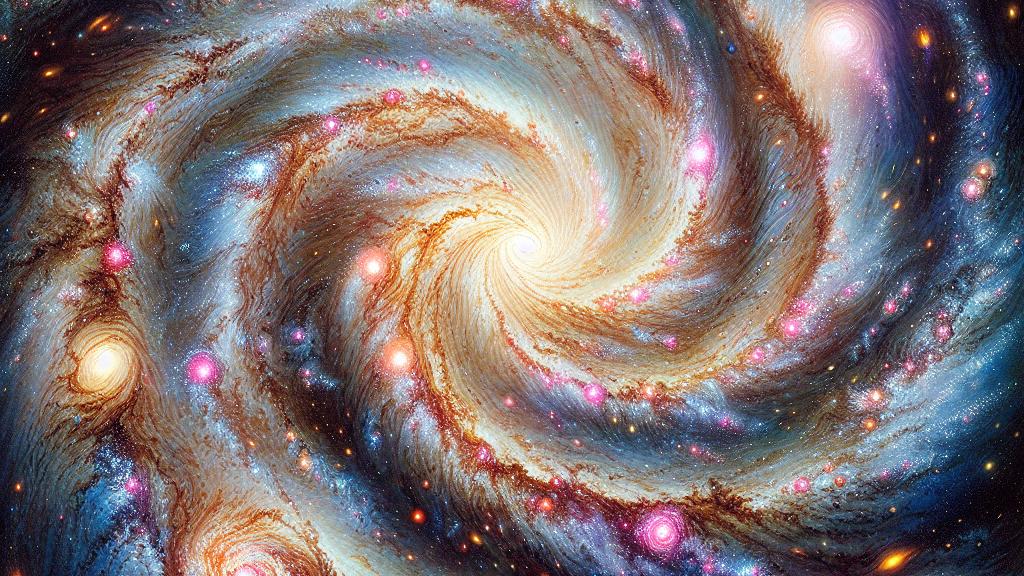Exploring Star-Forming Regions in the Spiral Galaxy IC 1954
Overview
- Hubble’s stunning observations unveil the enchanting spiral galaxy IC 1954, located a breathtaking 45 million light-years from Earth.
- This galaxy's brilliant H-alpha regions signify vibrant star formation, attracting the awe and curiosity of astronomers everywhere.
- Through an innovative collaboration of observatories, we aim to deeply understand galactic evolution and stellar life cycles.

Hubble's Insight into IC 1954
Located in the constellation Horologium, the marvelous spiral galaxy IC 1954 captivates viewers with its swirling arms and vibrant core glowing with colorful nebulae. The majestic pink spots scattered throughout the galaxy are not just eye-catching; they signal dynamic regions of star formation bustling with activity. The Hubble Space Telescope, situated approximately 332 miles above Earth, is instrumental in capturing these cosmic images. Utilizing its ability to detect ultraviolet and optical light, Hubble allows astronomers to study the complex processes that lead to the birth of stars. Each breathtaking image acts as a gateway, offering insights into how gas and dust intermingle to create the stellar phenomena we observe.
Collaboration of Observatories
Remarkably, the fascinating data on IC 1954 emerges from a synergy of groundbreaking observatories, including the prestigious Hubble Space Telescope and the advanced James Webb Space Telescope. This dynamic partnership harnesses an impressive array of observational techniques across multiple wavelengths—infrared, radio, and optical—to forge a rich understanding of the interstellar medium within this galaxy. Such collaborative efforts enable scientists to trace the lifelines of stars, from sparkling formation to their eventual decay, effectively illuminating the intricate dance of cosmic evolution that shapes our universe. Moreover, by mapping the evolutionary pathways of these celestial bodies, we deepen our grasp of galactic mechanics and the fundamental processes governing starbirth.
Implications for Understanding Galactic Evolution
By delving into the depths of IC 1954, we unlock secrets that transcend the specific characteristics of this galaxy, weaving a broader tapestry of cosmic formation and evolution across the universe. For instance, pioneering methods like 3D printing allow scientists to visualize the complex structures found within molecular clouds—the very heart of star formation. Understanding how filaments of gas and dust coalesce to form stars paints a vivid picture of stellar birth occurring in the universe’s cold, dark corners. As these discoveries unfold, they promise not only to enrich our knowledge of spiral galaxies like IC 1954 but also to illuminate the intricate processes that govern the birth of stars throughout the cosmos, making the cosmic narrative both awe-inspiring and relatable.

Loading...